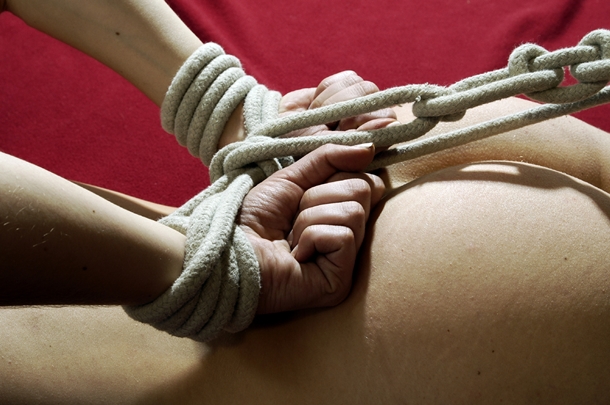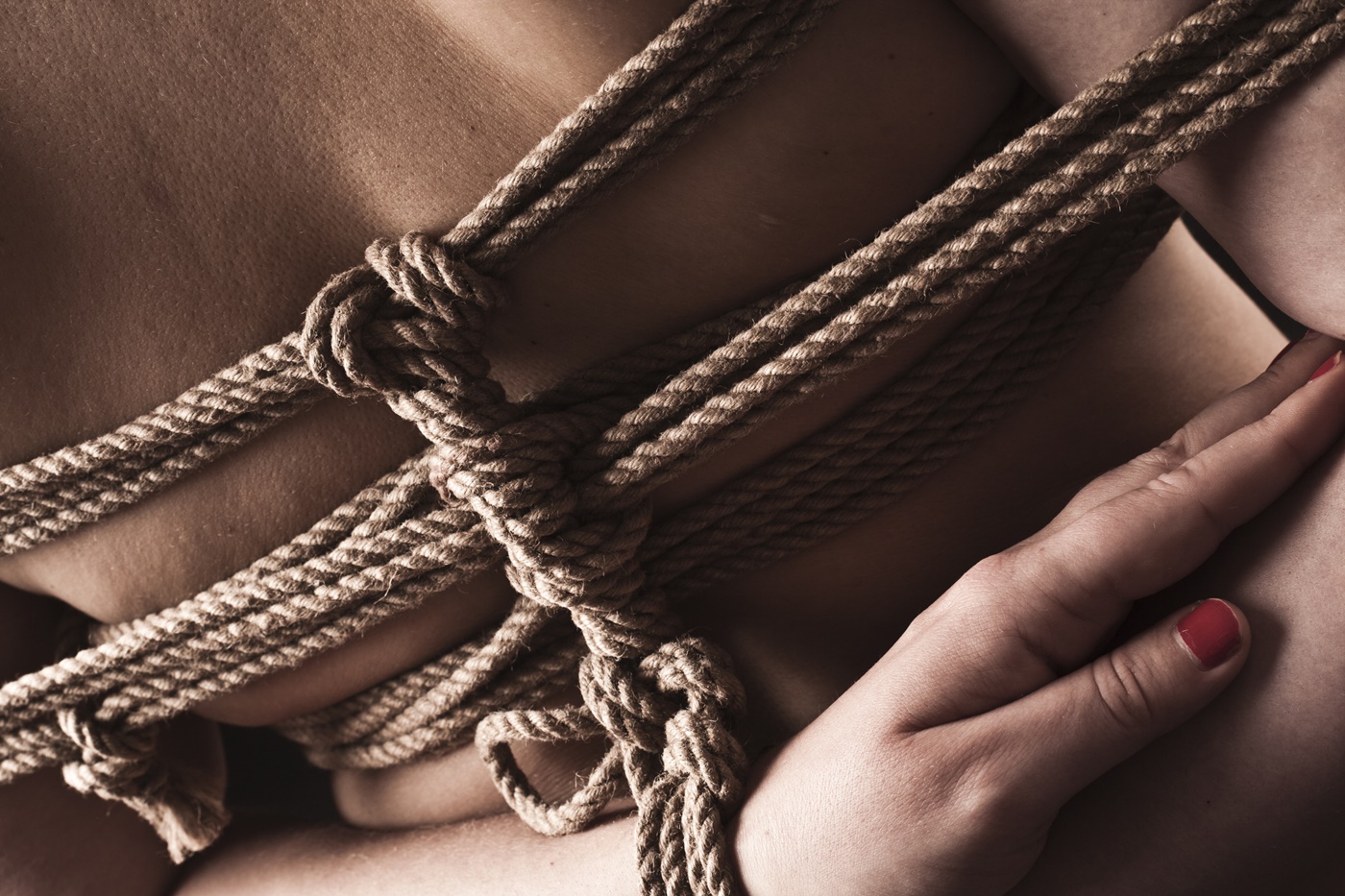What Is Suspension Bondage?
Suspension bondage is a form of bondage where the submissive is suspended in the air. This is an advanced bondage practice with many serious risks.
Suspension bondage can be a beautiful and fulfilling BDSM practice for both dominant and submissive. But it requires real study, skill, practice, and commitment.
Kink lovers understand that this form of bondage is a kind of edge play, with real dangers.

It may not be immediately obvious why dangling a lover from some ropes is so risky, so those of you interested in the art of suspension bondage should learn about and understand those risks.
Read: Bondage for Beginners: How to Get Started
What Risks Are Involved with Suspension Bondage?
Most people think of wrenching a shoulder, foot, or limb out of joint, or of poorly tied knots breaking, risking a fall or a bump on the head.
Few realize that positioning a rope incorrectly can cut off supply to blood vessels, or damage a nerve. Nerve damage takes place very quickly, in just moments, and can take months to heal, and in some cases never heals. Blood clots can form easily when blood flow is impeded. This can lead to stroke, heart attack, and death.
Just the act of hanging in an unusual position, with completely safe rope techniques, can lead to unconsciousness due to blood flow to or away from the head. The top must be on high alert at all times, observing the suspended party’s signs.
You can study rope bondage, including suspension bondage online. A great resource is a site called The Duchy, a top-rated kink blog specializing in rope bondage of all kinds. The site offers countess resources including tutorials on suspension bondage. It is fully recommended that you practice with an experienced teacher or partner as well.
For more bondage resources and links to tutorials, see our Guide to BDSM Education.
Not all suspension bondage uses rope. Leather, restraints, steel, wood and other kinds of materials are common as well.
Read: Bondage Restraints: 15 Types of Bondage Gear
What are the D/s Roles for Kinky Partners?
The top, or dominant, in suspension bondage is called a rigger. The top must be concerned with correct placement, anatomical knowledge, and reading submissive cues.
The bottom, or submissive partner, will benefit greatly from flexibility and agility practices like yoga or pole dancing. There is an art to hanging and even in total relaxation, suspended in thin air, there are muscles and tendons implicated in spreading. The more flexible the sub is, the more satisfying and safe he or she will be.
Read: How to Meet a Rope Bunny

What Positions Are Used in Suspension Bondage?
There are three main suspension bondage positions: vertical, horizontal and inverted.
Vertical Suspension
Vertical suspension is straight up and down, from the wrists or forearms. It can be very painful because the entire weight of the bottom is on the wrists. Novices might want to use handcuffs or rope for this instead of suspension cuffs, but this will cause ligament damage. Suspension cuffs help distribute the weight. It is better still to use a bondage rope harness, as wrist suspension is only safe for very petite submissives.
Horizontal Suspension
Horizontal suspension can be face up, face down, and tends to be the most balanced and comfortable position. Being “hog tied” (hanged from arms and legs behind the back) is technically horizontal, as well, and requires serious flexibility in the sub.
Inverted Suspension
Inverted suspension means being hanged upside down. Fainting, falling, and circulatory issues are common.
The risks of suspension bondage are not to be taken lightly. However, the experience is amazing and rare. Bound BDSM lovers report a feeling of complete freedom. It is like flying! There is also a profound intimacy and trust exchange. And the aesthetic is beautiful and erotic.

Besides studying and practicing this type of bondage with experts, one safer way to proceed is to use experienced helpers. They can be present to oversee rigging, keep watch on sub’s vital signs, and help safely remove someone from suspension. Don’t feel awkward about a third party presence during your intimate time with a bondage partner—think of it as having a security guard.
Do you have experience with suspension bondage? Is it something you would like to try?


Tell us what you think